Why Wraparound Models for Network Simulators Really Matter?
Wraparound model for 5G-LENA for nr-v4.1 and ns-3.44
Slow simulations when simulating large-scale deployments with detailed channel models? Sounds familiar?
Lately, we’ve seen this trend of balancing two (seemingly opposite) goals from a network simulator performance perspective:
- Simulate large urban or rural deployments, and
- Simulate very detailed channel models, especially needed when simulating above 6 Ghz frequencies, and when moving to higher frequency bands, like mmWave or even terahertz. To get sound results, it’s almost mandatory to use such realistic channel models whose level of detail is now closer to a link-layer simulator than a network simulator!
Good news!
We’re currently integrating a wraparound model into 5G-LENA, based on this publication:
R. S. Panwar and K. M. Sivalingam, Implementation of wrap around mechanism for system level simulation of LTE cellular networks in NS3, 2017 IEEE 18th International Symposium on A World of Wireless, Mobile and Multimedia Networks (WoWMoM), Macau, China, 2017, pp. 1-9, doi: 10.1109/WoWMoM.2017.7974289.
We plan to release it with 5G-LENA v4.1 by the end of June. In parallel, we’re generalizing the wraparound design for ns-3 to make it modular and reusable by other modules (e.g., lte or wifi). The current ns-3 wraparound support is already merged into ns-3.44 via: MR2330 while in MR2452 we plan to provide more general wraparound design for ns-3.
With this post, we’re excited to share preliminary results of these improvements coming in 5G-LENA Release 4.1!
Wraparound Simulation Campaign Setup
We compared three setups:
- 0th + 1st ring without wraparound,
- 0th + 1st ring with wraparound model, and
- 3 rings (0th-3rd), but only analyzing UEs in the 0th and 1st rings.
Note: The equivalent of option 2 would require at least 5 rings, but simulating this with full-buffer traffic and 8x8x2 dual-polarized gNB antennas would need far more time.
In past work, we typically used 5 rings for hexagonal scenarios:
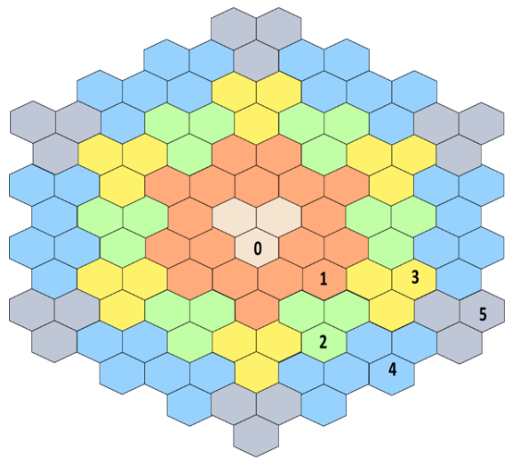
With the wraparound model, we achieve complete coverage (screenshot from Panwar & Sivalingam’s paper):
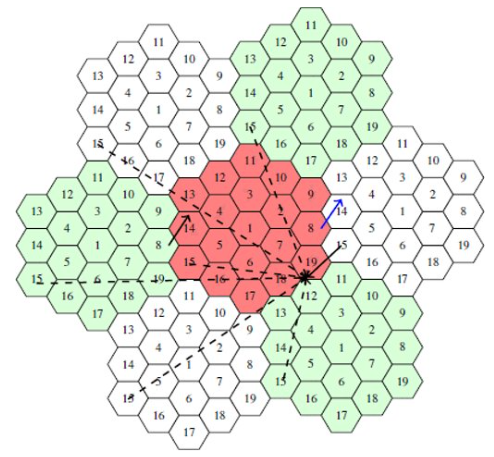
Benchmark results
We tested a hexagonal deployment with full-buffer traffic (max interference regime) to evaluate interference handling. Configuration: cttc-nr-3gpp-outdoor-calibration-user (Intel’s R1-1707360 setup, included in Release 4.1).
Execution times:
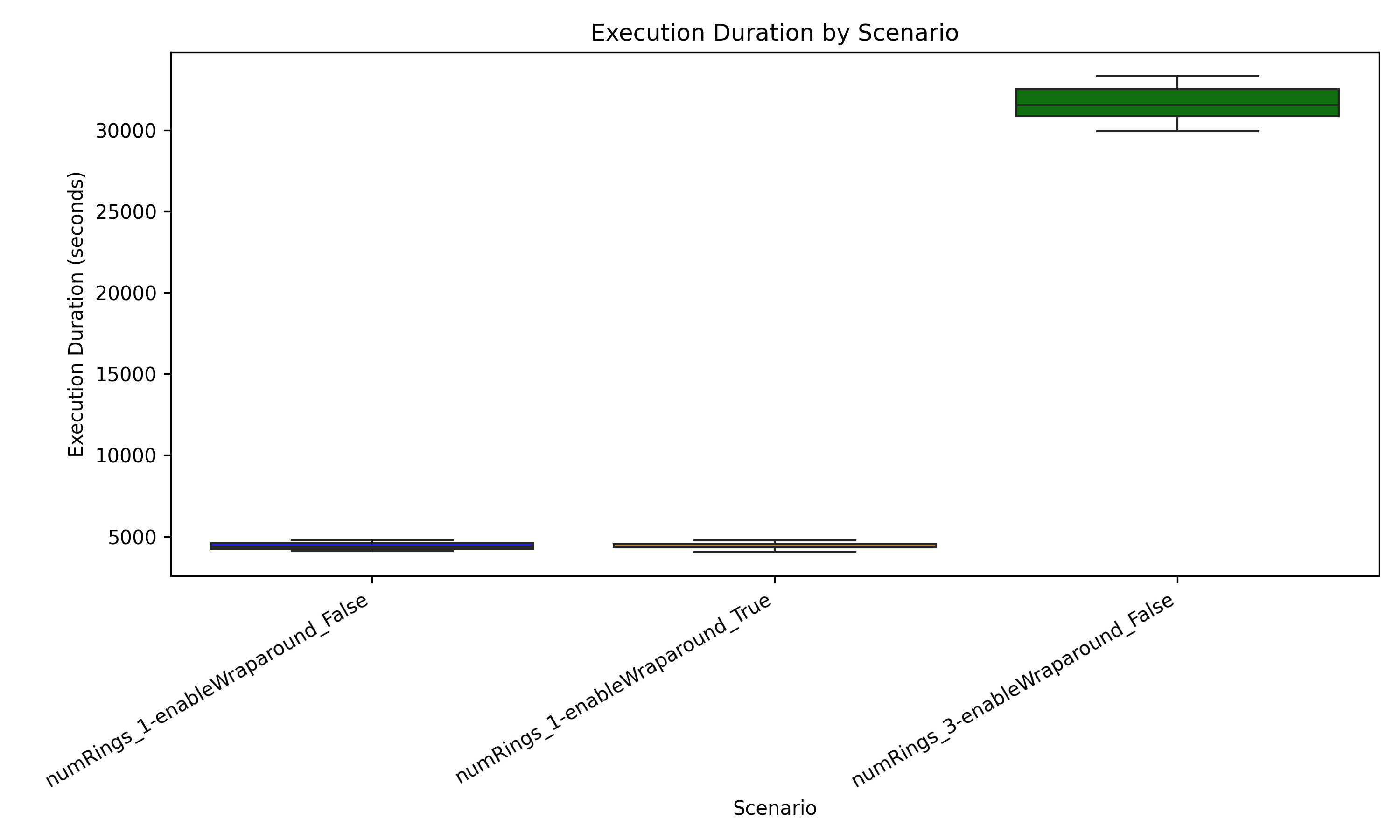
The wraparound model reduces runtime by 6×—from 8.33 hours to 1.38 hours! Compared to 5 rings, the improvement would be even greater. Each setup was repeated 24 times (different RngRun seeds).
Throughput results:
Median values:
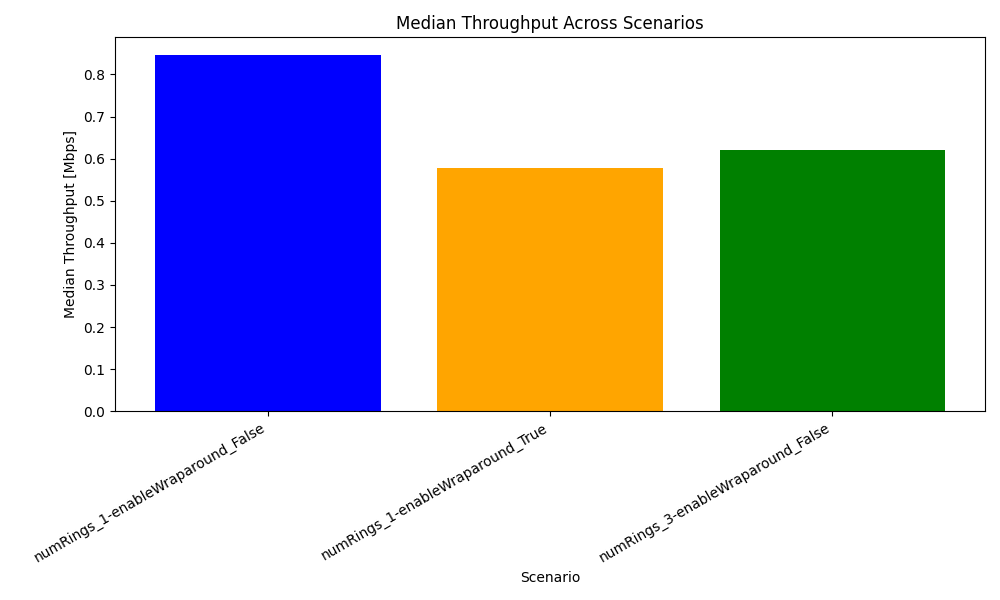
CDFs:
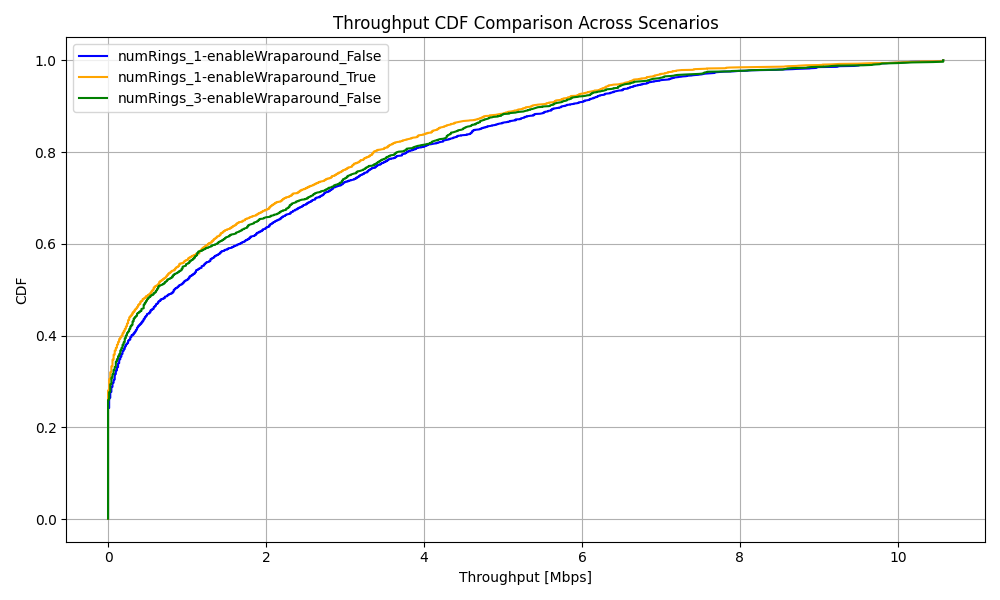
Let’s wrap up — both figuratively and literally!
These preliminary results show wraparound models are essential for network simulators, especially in large-scale hexagonal scenarios.
We hope you’ll find these improvements useful for your 5G-LENA simulations!
The 5G-LENA team